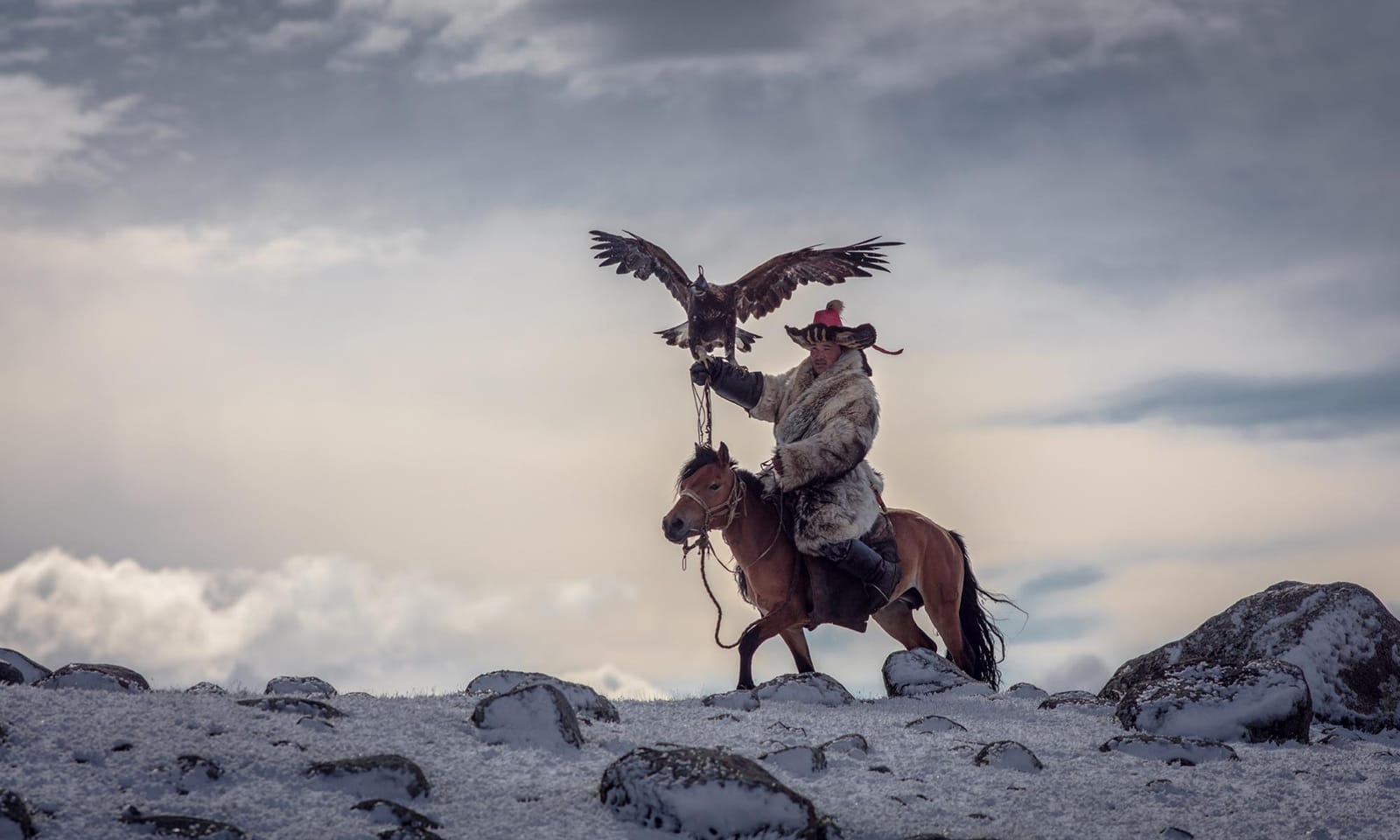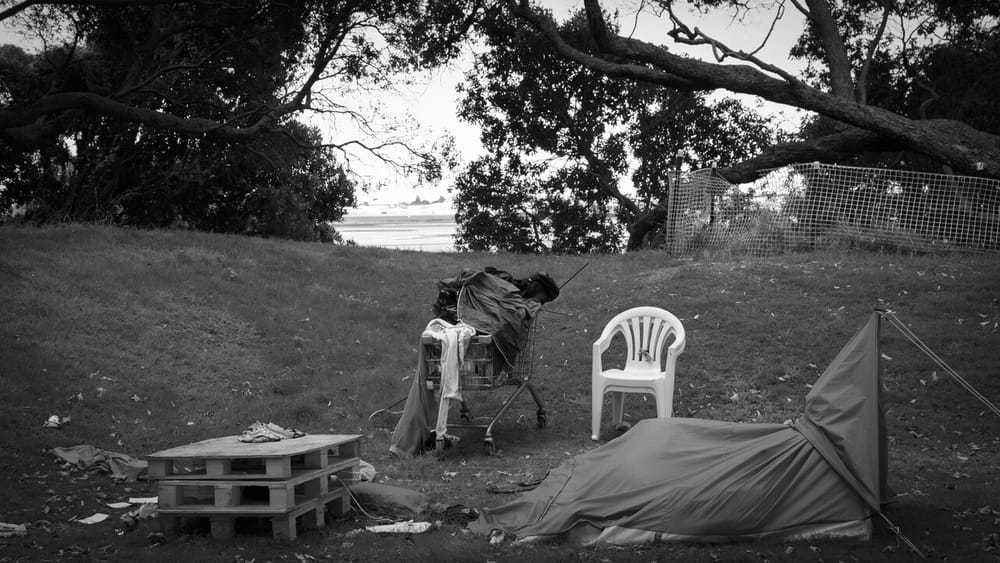The Tribal Way is a series of photo essays that dive into the world of tribal communities and view their histories, lifestyles and cultures, and their current place in the modern world.
Under a wide, windy sky of shifting clouds, the vast open terrain of Western Mongolia is striking in its pristine beauty.
Few places in the world are this untouched by modern urbanisation: the expansive steppe is free of commercial buildings and billboards, interrupted only by snow-capped mountains. The land is non-arable, and the frigid temperatures at night can be deadly to the ill-equipped. Yet, even in this seemingly inhospitable environment, humans have managed to thrive to this day. Who are these people, and why are they here?
The answer lies, perhaps surprisingly, in fairly recent history. Pastoral nomads of Kazakh origin first began to immigrate to Western Mongolia in the mid-1800s in order to escape Russian colonisation. Russia, in a concentrated effort to expand their empire and increase their number of military outposts, began to settle in Kazakhstan in droves, where they proceeded to impose their customs and culture upon the Kazakh people. The Russians then seized the nation’s most valuable resources, including prime grazing lands, prompting Kazakh uprisings that were swiftly crushed by the Russian military. By 1920, Kazakhstan fell to formal Russian rule when it was incorporated into the Soviet Union.
Meanwhile, the pastoral nomads sought to preserve their cultural identity and way of life in a terrain they took to rather well, in part because they were already familiar with it. Before the 20th century, the border between Kazakhstan and Mongolia was loosely delineated, and not nearly as regulated as it is today. As such, the nomads had been accustomed to moving freely between the two nations for hundreds of years. Thus, their transition to life on the Mongolian steppe was ideal, one that provided a safe haven in which they could preserve their cultural identity and autonomy.
At present day, there are about 100,000 Kazakh nomads in Mongolia and comprise only around four percent of the total population, despite being the largest ethnic minority in the nation. Furthermore, their culture is vastly different from that of most Mongolians. While many Kazakh nomads speak some Mongolian, their main language is Turkic. The majority of Mongolians practise Buddhism, whereas the Kazakh nomads are mainly Muslim.
Perhaps the clearest distinction is the Kazakhs’ semi-nomadic lifestyle, one of the oldest forms of subsistence in human history. Kazakh nomads herd livestock such as goats, sheep, yaks, camels and horses year-round, moving with the animals in search of better pastures and conditions as the seasons change. Many families will relocate up to four times a year, adapting their homes to the weather. In the summer, the nomads live in yurts called gers which are taller and more spacious than Mongolian style yurts, to optimise air circulation during the hotter season. In colder weather, they use wooden and stone dwellings constructed with earth and dung. Their homes are decorated with vibrant and intricate handwoven textiles and equipped with wood or dung burning ovens.
Bulgarian-born, London-based photographer and architect Dimitar Karanikolov had always wanted to visit Mongolia, so when he saw an opening to join a photography expedition to document the Kazakh nomads, he applied immediately. It proved to be a trip that opened his eyes to the possibility of a lifestyle free of modern complications. He observed that “they have no electricity, no mobile phones, no proper roads, no agriculture, no money (almost) and no concept of land ownership. It’s a sustainable and healthy way of living that hasn’t changed much over the centuries.”
Karanikolov also noted that several Kazakh families he met on his expedition in Western Mongolia “had never seen anyone outside of their community,” and yet were “super friendly and curious to interact with us.” For the Kazakh nomads, hospitality is of utmost importance, and are thus known to lavish upon guests fermented mare’s milk, air-dried cheese, or freshly baked pastries.” Once invited in as a guest, Karanikolov observed robust, effusive toasts “wishing health and prosperity to one another, good fortune, strong family, lots of kids and cattle.” He also had the honour of attending a Kazakh wedding, which he states was “a truly memorable and emotional experience.” These weddings traditionally feature lively wrestling matches that include ceremonial garb and choreographed stretches, as well as horse races that garner cheers and even prizes for the winners.
Both wrestling and horse racing are popular sports for the Kazakh nomads, but perhaps one of their most prized skills is mastery of golden eagle hunting, or falconry, an ancient practice known to have been practised by humans since 2,000 BCE. This form of hunting, in which an eagle is trained for years to target animals with fur, enables the nomads to obtain the pelts they need to withstand the steppe’s freezing winters. Yet the practice is not purely utilitarian, but a revered tradition with its own regalia, and even seasonal festivals that draw in crowds of tourists.
While visitors from around the world often return home captivated by the Kazakh nomads’ unique customs, it is important to remember that they are not a novelty and Karanikolov’s stunning photos depict individuals who have descended from, and maintain, an incredibly resilient cultural heritage. They graciously share it with us in these images.
A herd of goats.
Kazakh nomads breed sheep, goats, cows, yaks, camels and horses. Some herds count more than a thousand animals.
A scene from a mare’s breaking. The horse is trained to carry a rider in the saddle.
A typical Kazakh settlement consists of several yurts placed in the endless valley.
A boy in front of his yurt.
Kazakh kids have never eaten a vegetable in their life, but some studies suggest Mongolian kids are the healthiest on the planet.
Kazakh nomads can build their home (yurt) within a couple of hours.
A woman preparing kumis (fermented mare milk).
Guests arriving at a wedding party.
The wedding ceremony. The marked area is later used for wrestling.
The “kitchen” at the wedding party. What’s being cooked is mainly boiled mutton with noodles—extremely delicious!
A typical dinner setup. Everyone sits on the ground around a bowl of meat. The fat from the sheep’s back is considered a delicacy and is offered to the guests first.
Elders enjoying a cup of tea.
Eagle hunter Shokan is one of the Kazakh nomads’ superstars—there are lots of documentaries about his life on National Geographic and Discovery Channel.







